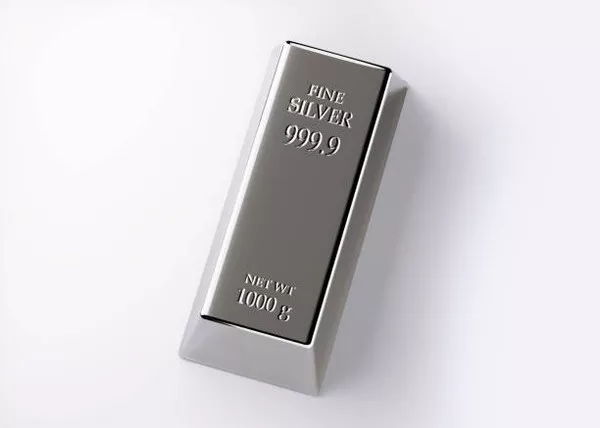In the intricate world of commodities trading, the spot price holds significant importance as it represents the current market value of a particular commodity for immediate delivery. Among these commodities, silver stands out for its historical significance, industrial applications, and investment appeal. Understanding who pays the spot price for silver requires delving into the dynamics of the silver market, including its participants, influences on pricing, and the role of spot transactions.
The Participants in the Silver Market
Before diving into who pays the spot price for silver, it’s crucial to understand the various participants in the silver market. These participants can be broadly categorized into producers, consumers, investors, and traders.
Producers: Silver producers include mining companies responsible for extracting silver from the earth. These companies play a vital role in the market by supplying newly mined silver to meet demand.
Consumers: Industrial users such as electronics manufacturers, solar panel producers, and the healthcare industry are significant consumers of silver. They utilize silver in various applications ranging from electronics to medical equipment.
Investors: Investors participate in the silver market through various instruments such as exchange-traded funds (ETFs), futures contracts, and physical silver holdings. They often seek to diversify their portfolios or hedge against inflation and economic uncertainty.
Traders: Traders, including financial institutions, hedge funds, and individual traders, buy and sell silver in the financial markets to profit from price movements. They may engage in short-term speculation or long-term investment strategies.
The Role of Spot Price in the Silver Market
The spot price of silver serves as a benchmark for pricing silver transactions worldwide. It represents the price at which silver can be bought or sold for immediate delivery in the global marketplace. Spot prices are determined by the forces of supply and demand in the silver market and are influenced by various factors, including economic indicators, geopolitical events, currency movements, and investor sentiment.
Who Pays the Spot Price for Silver?
Industrial Users: One of the primary groups that pay the spot price for silver are industrial users. Companies that rely on silver for manufacturing purposes often purchase silver at or near the spot price to fulfill their production needs. These industrial users typically buy silver in large quantities and may enter into long-term supply contracts with silver producers to secure a steady source of supply.
Retail Investors: Retail investors who purchase physical silver, such as coins, bars, or rounds, from dealers or online platforms also pay prices closely aligned with the spot price. Dealers typically charge a premium over the spot price to cover manufacturing costs, distribution expenses, and profit margins. However, the spot price serves as a reference point for determining the fair market value of physical silver products.
ETFs and Funds: Exchange-traded funds (ETFs) and other investment vehicles that track the price of silver rely on the spot price for valuation purposes. Investors in silver ETFs buy and sell shares on stock exchanges at prices that closely mirror the spot price of silver. Similarly, mutual funds and other investment funds that hold silver as part of their portfolios use the spot price to calculate the net asset value (NAV) of their shares.
Futures Traders: Futures traders play a significant role in determining the spot price of silver through their activities in the futures markets. Futures contracts for silver allow traders to buy or sell silver at a predetermined price on a future date. The prices of these futures contracts fluctuate based on market expectations, supply and demand dynamics, and other factors. Traders who participate in futures markets may eventually take delivery of physical silver or offset their positions before the contract’s expiration.
Bullion Banks and Dealers: Bullion banks, which are major financial institutions that specialize in precious metals trading, often facilitate transactions at or near the spot price for silver. These banks provide liquidity to the market by buying and selling silver on behalf of clients, including industrial users, investors, and other financial institutions. Bullion dealers also play a crucial role in the physical silver market, offering a wide range of silver products to retail customers and institutional investors.
Factors Influencing the Spot Price of Silver
Several factors influence the spot price of silver, including:
Supply and Demand: Like any commodity, the spot price of silver is influenced by the fundamental forces of supply and demand. Factors such as mine production, industrial demand, investor sentiment, and geopolitical tensions can impact the balance between supply and demand, thereby affecting prices.
Economic Indicators: Economic indicators, including inflation rates, interest rates, GDP growth, and manufacturing activity, can influence the demand for silver as an investment and industrial metal. Economic data releases often lead to market volatility and may affect the spot price of silver.
Currency Movements: Since silver is traded in US dollars on global markets, currency movements, particularly fluctuations in the value of the US dollar against other major currencies, can influence the spot price of silver. A stronger US dollar generally leads to lower silver prices, while a weaker dollar tends to boost silver prices.
Geopolitical Events: Geopolitical tensions, conflicts, trade disputes, and other geopolitical events can impact investor sentiment and contribute to price volatility in the silver market. Safe-haven demand for precious metals like silver often increases during times of geopolitical uncertainty.
Conclusion
The spot price of silver plays a crucial role in the global silver market, serving as a benchmark for pricing transactions and investment decisions. Various participants, including industrial users, investors, traders, and financial institutions, rely on the spot price to buy and sell silver in the marketplace. Understanding the dynamics of the silver market and the factors influencing spot prices is essential for anyone involved in silver trading or investment. By staying informed about supply and demand dynamics, economic indicators, and geopolitical developments, market participants can make more informed decisions and navigate the complexities of the silver market effectively.


